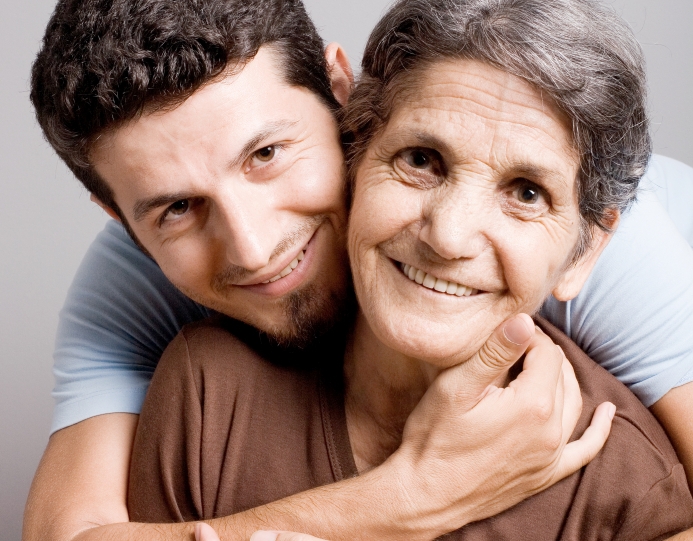Your Employee and Family Assistance Program is a support service that can help you take the first step toward change.
Seniors’ safety: how to prevent injuries
Seniors value their independence and usually want to stay in their home as long as possible. However, you may often worry about your parents' safety—and with good reason. Statistics show that injuries in the home increase with age. According to Statistics Canada, most fall-related injuries happen in and around the home, about one-quarter of them around stairs and bathrooms. In fact, falls are the leading cause of injury to people over 65. Sadly, a large proportion of seniors' injury-related deaths are the result of falls.
Statistics show that injuries in the home increase with age. According to Statistics Canada, most fall-related injuries happen in and around the home, about one-quarter of them around stairs and bathrooms. In fact, falls are the leading cause of injury to people over 65. Sadly, a large proportion of seniors' injury-related deaths are the result of falls.
This means that whether your parents are living in their own homes or sharing yours, it is important to ensure that their environment is as safe as possible.
Why are seniors more at risk of injury?
Although aging affects everyone differently, there are some common physical limitations that can have an impact on seniors' abilities. For example, seniors often experience changes to their vision, hearing, sense of touch and smell as well as their balance. While these changes may be subtle and even go unnoticed by the senior, their effects can contribute to falls or other injuries. Here are some sensory changes to watch for in seniors:
Vision
Home safety checklist
You can help prevent injuries and keep seniors safe by checking for potential safety hazards and taking the necessary precautions. Use the following checklist as a guide to inspecting your elders’ home, and adding any safety features required:
Safety first
A little prevention and planning can provide peace of mind. Even after you've inspected your parent's home and made the necessary improvements, it’s a good idea to review the checklist with your parent and have a quick look through their home on a regular basis. For example, every couple of months, check batteries in smoke and carbon monoxide detectors and be sure all stair rails and grab bars are still secure.
Although your parent may feel you are being overly cautious, you will rest assured that you have done all you can to keep them safe.
 Statistics show that injuries in the home increase with age. According to Statistics Canada, most fall-related injuries happen in and around the home, about one-quarter of them around stairs and bathrooms. In fact, falls are the leading cause of injury to people over 65. Sadly, a large proportion of seniors' injury-related deaths are the result of falls.
Statistics show that injuries in the home increase with age. According to Statistics Canada, most fall-related injuries happen in and around the home, about one-quarter of them around stairs and bathrooms. In fact, falls are the leading cause of injury to people over 65. Sadly, a large proportion of seniors' injury-related deaths are the result of falls.This means that whether your parents are living in their own homes or sharing yours, it is important to ensure that their environment is as safe as possible.
Why are seniors more at risk of injury?
Although aging affects everyone differently, there are some common physical limitations that can have an impact on seniors' abilities. For example, seniors often experience changes to their vision, hearing, sense of touch and smell as well as their balance. While these changes may be subtle and even go unnoticed by the senior, their effects can contribute to falls or other injuries. Here are some sensory changes to watch for in seniors:
Vision
- A decline in perception, causing difficulty judging distances
- Trouble seeing contrasts and colours
- Eyes take longer to adjust from dark to light
- Eyes are more sensitive to the glare of sunlight or bright light
- Decreased sensitivity to heat, pain and pressure
- Sense of smell diminishes
- Hearing loss
- Seniors often experience a decline in equilibrium, making it difficult to recover balance
- Muscular strength and joint flexibility are reduced, affecting balance
- Manner of walking changes—speed, length of stride, etc.—making seniors more prone to falls
Home safety checklist
You can help prevent injuries and keep seniors safe by checking for potential safety hazards and taking the necessary precautions. Use the following checklist as a guide to inspecting your elders’ home, and adding any safety features required:
| Area | What to Look for | Tips for Improving Home Safety |
| Entrance |
|
|
| Bathroom |
|
|
| Bedroom |
|
|
| Kitchen |
|
|
| Medications |
|
|
| General Hazards Throughout the Home |
|
|
Safety first
A little prevention and planning can provide peace of mind. Even after you've inspected your parent's home and made the necessary improvements, it’s a good idea to review the checklist with your parent and have a quick look through their home on a regular basis. For example, every couple of months, check batteries in smoke and carbon monoxide detectors and be sure all stair rails and grab bars are still secure.
Although your parent may feel you are being overly cautious, you will rest assured that you have done all you can to keep them safe.
© 2025 LifeWorks (Canada) Ltd. Your program may not include all services described on this website, please refer to your benefit material for more information. For immediate assistance, call 1.844.880.9137.
